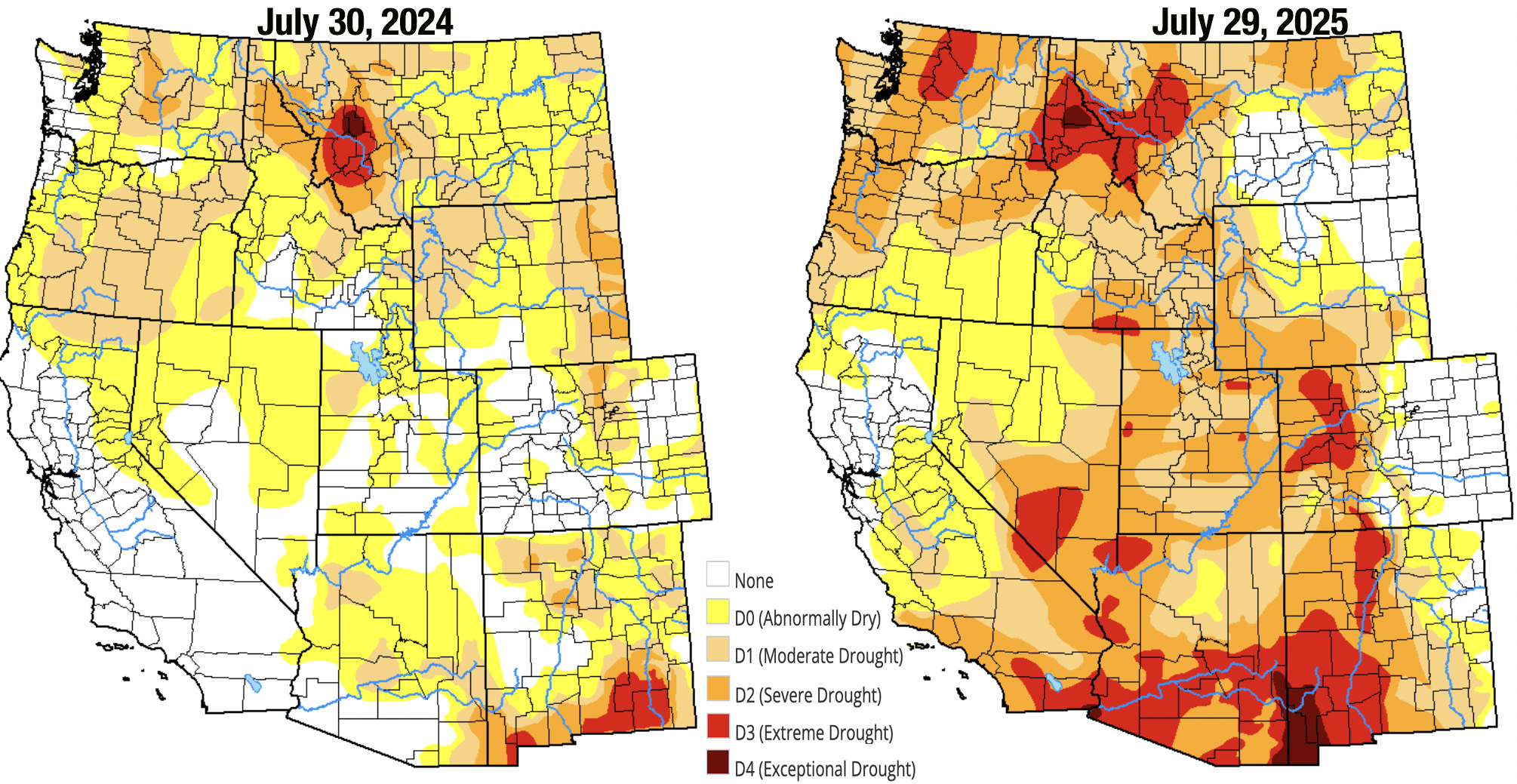Drought intensifies and spreads
Also: Introducing Data Center Watch, alfalfa exports fall, federal agency trolling
🥵 Aridification Watch 🐫
The monsoon is on its way, apparently, but seems to be delivering more lightning than rain to many areas that are grappling with wildfires. Meanwhile, the drought is intensifying and spreading in almost all parts of the West, especially in the deep Southwest.
Streamflows are dropping, too. The Animas River in Durango has fallen …
Keep reading with a 7-day free trial
Subscribe to The Land Desk to keep reading this post and get 7 days of free access to the full post archives.


